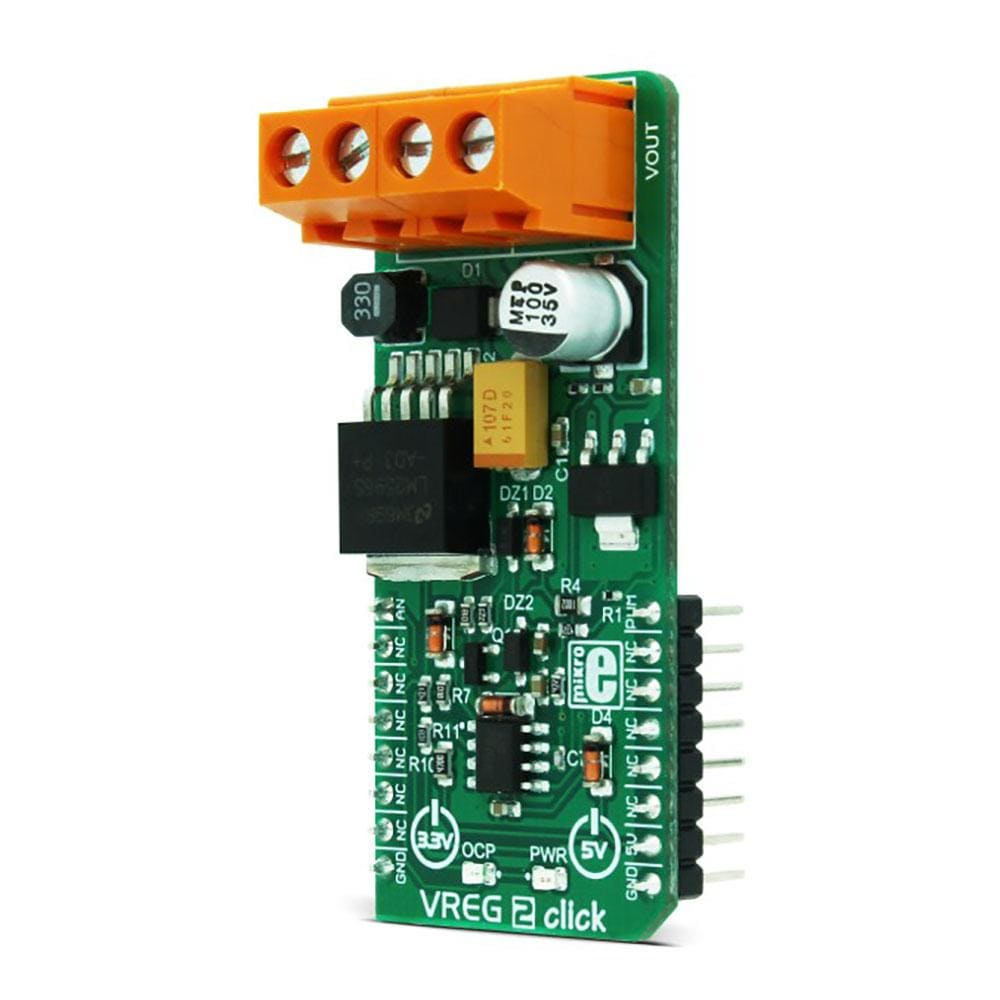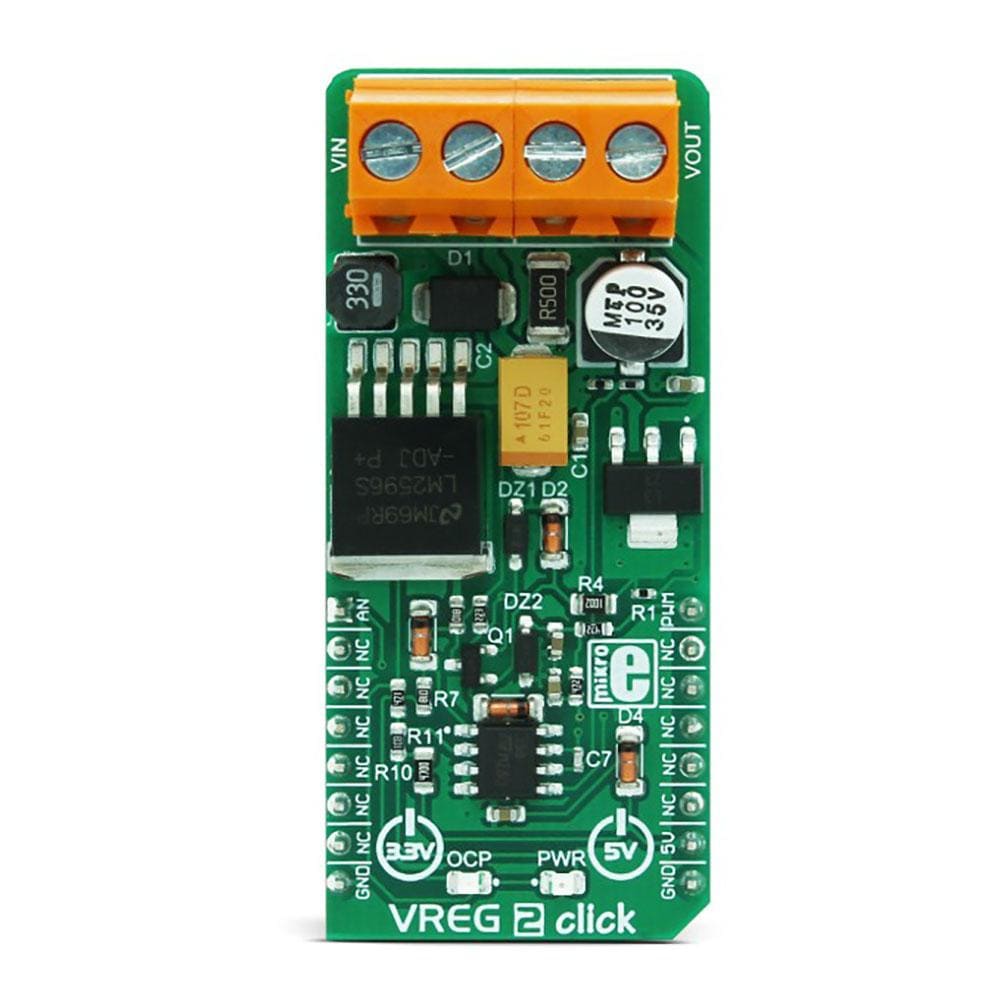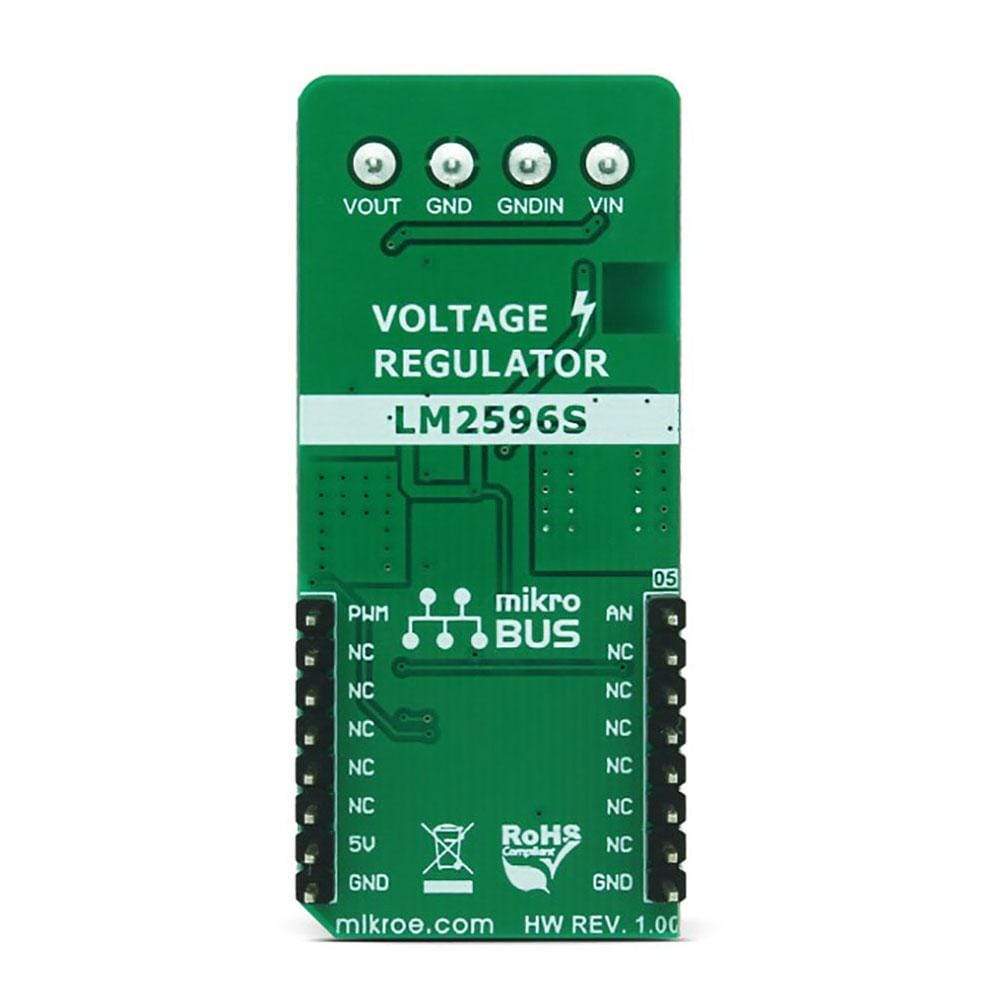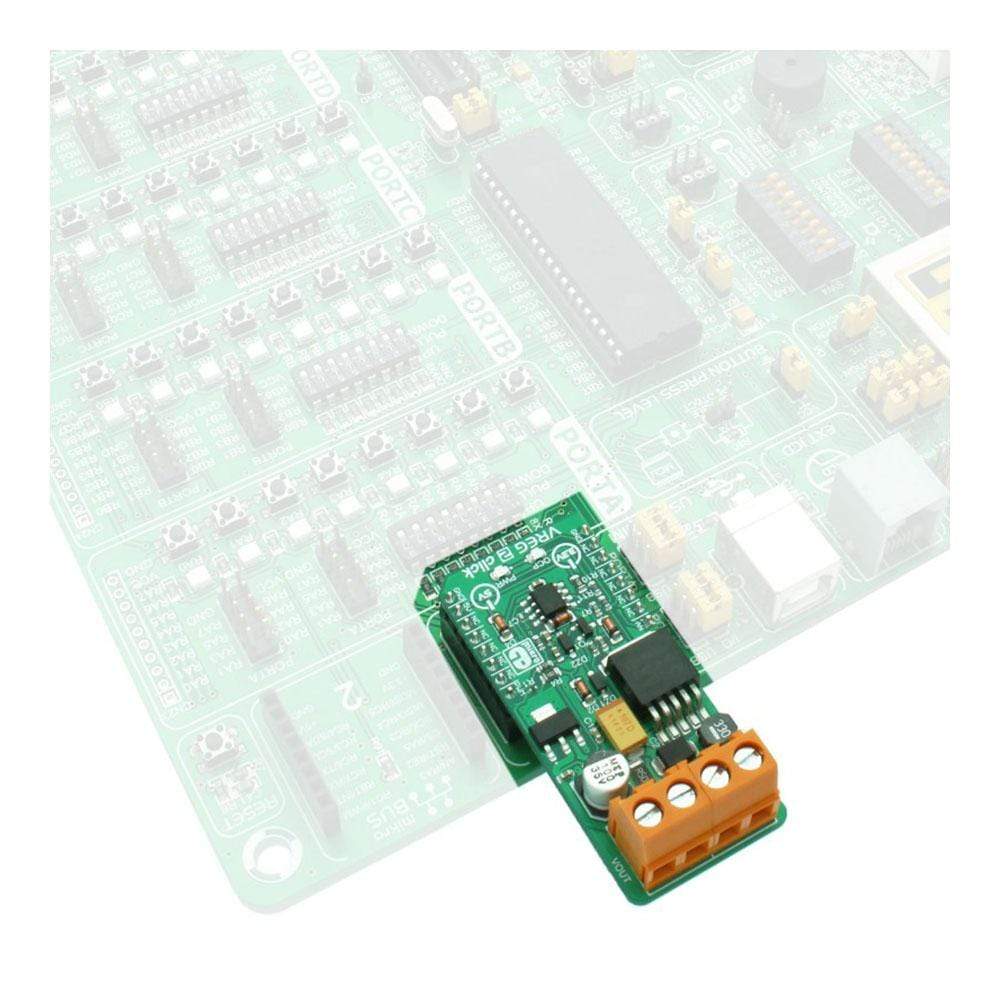



Overview
The VREG 2 Click Board™ is a voltage regulator Click Board™, with outstanding performance. It has a steady output voltage with the ripple lower than 5mV, short circuit protection with the LED indicator, and high efficiency with minimal power dissipation. The main output regulation element is the LM317, a well-established adjustable voltage regulator, often used in various electrical designs, for its outstanding regulation characteristics. The supporting electronics allows for reduced dissipation, voltage regulation and short-circuit indication. It consists of the LM358, a dual operational amplifier (op-amp) with high voltage gain, and the LM2596 buck converter.
The VREG 2 Click Board™ can be used with the input voltage in the range of 10V to 35V, and output voltage in the range of 2.5V to 15V, with current up to 600mA.
Downloads
Das VREG 2 Click Board™ ist ein Spannungsregler Click Board™ mit hervorragender Leistung. Es verfügt über eine stabile Ausgangsspannung mit einer Welligkeit von weniger als 5 mV, Kurzschlussschutz mit LED-Anzeige und hohe Effizienz bei minimaler Verlustleistung. Das wichtigste Ausgangsregelelement ist der LM317, ein bewährter einstellbarer Spannungsregler, der aufgrund seiner hervorragenden Regeleigenschaften häufig in verschiedenen elektrischen Designs verwendet wird. Die unterstützende Elektronik ermöglicht eine geringere Verlustleistung, Spannungsregelung und Kurzschlussanzeige. Es besteht aus dem LM358, einem dualen Operationsverstärker (Op-Amp) mit hoher Spannungsverstärkung, und dem Abwärtswandler LM2596.
Das VREG 2 Click Board™ kann mit einer Eingangsspannung im Bereich von 10 V bis 35 V und einer Ausgangsspannung im Bereich von 2,5 V bis 15 V bei einem Strom von bis zu 600 mA verwendet werden.
| General Information | |
|---|---|
Part Number (SKU) |
MIKROE-3055
|
Manufacturer |
|
| Physical and Mechanical | |
Weight |
0.027 kg
|
| Other | |
Country of Origin |
|
HS Code Customs Tariff code
|
|
EAN |
8606018713134
|
Warranty |
|
Frequently Asked Questions
Have a Question?
Be the first to ask a question about this.




